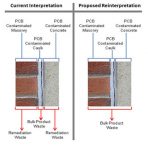Category: Chemicals
Today’s workplace uses thousands of chemicals, many of which are hazardous. The resources in this section will help guide you in the safe and legal identification, storage, transport, and use of these chemicals, and in making sure that your employees right to know how to be safe around such substances is provided, as required by law.
Solvents are certainly useful in many workplaces but can also be hazardous to health and may cause fires, explosions, and contamination. Solvents are common in many workplaces, but that doesn’t mean workers don’t need to be careful. Like other chemicals, solvents can be hazardous if stored or handled improperly. When employees work with solvents, they […]
Authorized by California’s 2008 Green Chemistry statute (Assembly Bill 1879), a final SCPR as it was proposed would constitute the most far-reaching regulation yet of chemicals of concern (COC) by requiring that manufacturers conduct complex analyses of these substances. Such analyses would be intended to reduce the concentration of the COC in a product and/or […]
Today, we talk about who’s covered by HAZWOPER requirements and specifically what the rules require. We also introduce you to excellent HAZWOPER DVD training library that can help you meet training requirements easily and effectively at a reasonable cost. HAZWOPER (hazardous waste operations and emergency response) standards cover employers with one or more employees who […]
Under HAZWOPER rules, a written safety and health program must be developed for operations and cleanup at hazardous waste sites. Programs must have seven elements. OSHA rules say that HAZWOPER (hazardous waste operations and emergency response) safety and health programs must incorporate the following elements: Organizational structure Comprehensive work plan Site-Specific Safety and Health Plan […]
In recent years, EPA has learned a great deal about the extent to which products manufactured to contain PCBs (e.g., paint and caulk) were used in many buildings, including schools, before the manufacture of PCBs was banned by the Toxic Substances Control Act (TSCA). As more buildings were discovered to have PCB contamination, it was […]






